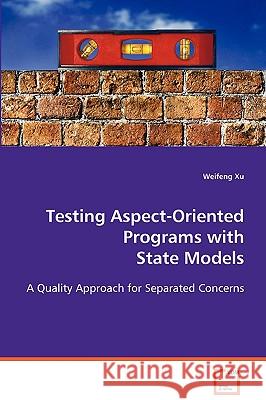Testing Aspect-Oriented Programs with State Models » książka
Testing Aspect-Oriented Programs with State Models
ISBN-13: 9783639075595 / Angielski / Miękka / 2008 / 96 str.
The new constructs in aspect-oriented programming can cause hazards to quality assurance. To detect aspect defects, this book presents a state-based approach to systematic modeling and testing of aspects. We extend finite state machines with notations for specifying incremental modification aspects, integration aspects, and combination aspects. We compose aspect models with their base class models through an explicit weaving mechanism. We adapt the round-trip path testing of object-oriented programs to the generation of test sequences from woven-state models. An incremental testing process is exploited to determine whether failures, if revealed, have to do with aspects. We have conducted a series of experiments based on three applications. To further evaluate the fault-detection ability, we have created a significant number of mutants (or variation versions) by seeding one or more aspect variations (i.e., potential faults) and exploited multi-variation mutants to investigate the effect of interaction between aspect variations. Our experiments indicate that our model-based testing approach is highly effective in the detection of the seeded aspect faults."
The new constructs in aspect-oriented programming can cause hazards to quality assurance. To detect aspect defects, this book presents a state-based approach to systematic modeling and testing of aspects. We extend finite state machines with notations for specifying incremental modification aspects, integration aspects, and combination aspects. We compose aspect models with their base class models through an explicit weaving mechanism. We adapt the round-trip path testing of object-oriented programs to the generation of test sequences from woven-state models. An incremental testing process is exploited to determine whether failures, if revealed, have to do with aspects. We have conducted a series of experiments based on three applications. To further evaluate the fault-detection ability, we have created a significant number of mutants (or variation versions) by seeding one or more aspect variations (i.e., potential faults) and exploited multi-variation mutants to investigate the effect of interaction between aspect variations. Our experiments indicate that our model-based testing approach is highly effective in the detection of the seeded aspect faults.











